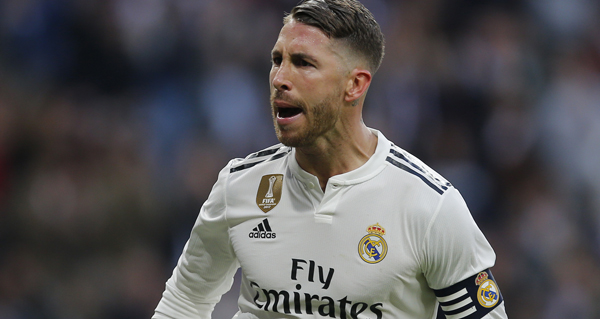Sergio Ramos is well-liked in just one part of one city. This is the case with most great defenders, frustrators and bullies, serial cheats with stethoscopes against the safe. It makes sense that if you understand angles as well as Ramos does—the ball is here, the player is there, and I need to meet both of them at precisely this point—that you’re also sharply attuned to what the linesman won’t see, the shirt pulls and kidney shots you can get in behind the play, or within its shadowed margins. Intelligence, in an attacking player, makes them seem like a scientist or an artist. In a center back, the same quality reads as devious thuggery. Because there’s no beautiful way to play the position. You can occasionally dribble your way out of trouble, launch arcing cross-field passes, but at its core, the job is about getting in the way and pushing other people out of spaces they’re not supposed to be in. Concrete highway dividers don’t win design awards. Ramos accepts this, and settles for being as solid and brutal and tough—as smart—as it gets for his position. That’s the standard he’s set for more than a decade.
You can’t blame him for slipping some, at age 34. His body’s starting to regret all those times he’s used his leg as a tripwire, been chucked to the turf by a frustrated opponent. Its latest complaint is a knee injury that’s been bothering him since October. Ramos won’t sit unless he absolutely has to, so he powered through the fall and early winter with a slight limp before finally relenting in mid-January. A recent report from Cadena Ser revealed that he took four separate pain-reducing injections before and after his last match, a loss against Athletic Bilbao in the Spanish Super Cup semifinal. Following that heroic-bordering-on-foolish effort, Ramos missed the next three games before deciding—amid strenuous convincing from Real Madrid’s medical staff—to get surgery on the knee, which was successfully completed this past Saturday. Turns out the problem was a torn meniscus, the recovery from which will put him out until at least early April. It’s possible, given Atlético Madrid’s sizable lead at the top of the Liga table and the unpredictability of the Champions League knockout stages, that by the time Ramos returns, Madrid won’t have any more meaningful games to play until next season.
This is a problem on its own, a missed opportunity that will eat at Ramos throughout his rehab, but further complicating matters is the fact that his contract is up at the end of the year. It’s no cinch that he’ll be back. There are already rumors, sourced and not, with all the dubious rigor of transfer market reporting, that his agent has received interesting offers from PSG and Manchester United, and the vibes emanating from Florentino Perez’s office are noncommittal at best. If Perez does end up extending Ramos, it won’t be a thank you for past services but under the assumption that he still has a couple more excellent seasons to come. Even legends are not allowed to outlive their usefulness at Real Madrid. Not Cristiano Ronaldo, not Iker Casillas. Perez errs on the side of letting players go too early rather than too late. It’s getting pretty late for Sergio Ramos.
There’s also the matter of money, which seems obvious given that we’re talking about a contract renewal, but in the current financial climate it’s especially important, and it might keep Real Madrid from retaining Ramos even if they would like to. You see, there’s a salary cap in Spain. Each offseason, La Liga examines the financial records of each club and tells them what they’re allowed to spend on player wages. Madrid work with a figure that’s many, many times bigger than what Celta Vigo or Real Betis have at their disposal, but there’s still an upper limit, and given that there haven’t been any fans in the stands this season, they’re (relatively) hard up for cash. Clubs like PSG and Man United have a little more flexibility, given that they only have to comply with Financial Fair Play, which is a looser set of regulations that takes into account multiple seasons’ worth of revenue and allows clubs to take greater risks than La Liga’s salary cap system does. It’s not unlikely that a couple other megaclubs will be able to offer Ramos a contract that Madrid won’t be allowed to match, or that would require them to move other players in order to free up salary space. In the time it takes Perez to explain to Ramos that we need to ship this guy out, and then bring in a cheaper replacement, and that should give us another—he might be out the door.
It remains to be seen how patient the two sides will be with each other. The last time Ramos renewed was reasonably straightforward. Madrid wanted to keep him; he made some vague noises, as all big-name players in search of a payday do, about leaving for United; and they settled on a long-term deal that made everybody happy. A half-decade later, their motivations are less clearly aligned. Ramos is going to want one more big contract and Perez is going to want value for his money, especially given the club’s current financial state. The relationship, as productive and mutually gratifying as it’s been, might be at an end. For now, Ramos will get himself healthy while not knowing exactly what he’s getting healthy for. He’ll think he’s got some time left as one of the very best defenders in the world. What Perez thinks will be clear at the press conference. A legend leaves, or recommits. The only guarantee is that the headlines will be huge.



